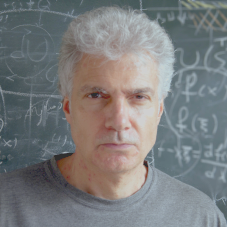Course Details
Molecular Simulation of MaterialsMolecular Simulation of Materials
Direction Fluids
Spring Semester
Ι. Principles of Statistical Mechanics
Dynamical trajectories in phase space. Probability density of a statistical ensemble. Liouville equation. Irreversibility and attainment of thermodynamic equilibrium. Equilibrium statistical ensembles: microcanonical, canonical, isothermal-isobaric. Calculation of thermodynamic properties. Pressure (stress) as an equilibrium ensemble average: the virial theorem. Chemical potential as an equilibrium ensemble average: Widom?s theorem.
Grand canonical ensemble for open systems: density fluctuations, calculation of sorption isotherms.
Distribution functions for characterizing structure, their relation with thermodynamic properties and with X-ray and neutron diffraction measurements.
ΙΙ. Μolecular simulations
Molecular models and force fields, periodic boundary conditions. Computation of the total potential energy.
Monte Carlo integration, Monte Carlo sampling. Connection with the theory of stochastic processes. Metropolis algorithm in the canonical, isothermal-isobaric and grand canonical ensembles. Bias in attempting elementary moves and corresponding acceptance rules.
Molecular dynamics simulations. Algorithms for integrating the equations of motion. Molecular dynamics in the presence of holonomic constraints dictated by molecular geometry. Molecular dynamics in statistical ensembles other than the microcanonical.
Analysis of molecular simulation trajectories for the determination of structural, thermodynamic, and dynamical properties. Time correlation functions and their relation with spectroscopic measurements. Elements of linear response theory. Computation of transport coefficients (diffusivity, thermal conductivity, viscosity).
ΙΙΙ. Techniques for long time and length scales
Coarse-graining and reduction to models with fewer degrees of freedom for the study of phenomena at long time and length scales. Projection of the equations of motion onto few, slowly evolving degrees of freedom. Elements of Brownian motion theory. Principles of Brownian Dynamics and Dissipative Particle Dynamics.
Transition-state theory for estimating the rates of infrequent events. Kramers equation for the rate constant. Bennett-Chandler theory for determining the rate constant from molecular simulation. Computation of transition paths and rate constants with many, coupled, slowly-evolving degrees of freedom. Poisson processes resulting from successions of infrequent events. Master equation. Kinetic Monte Carlo simulation.
ΙV. Applications
Discussion of examples of molecular simulation work aiming at understanding and prediction of structure, thermodynamic and rheological properties of long-chain polymer melts; permeability of polymer membranes; structure and function of lipid bilayer membranes and biological macromolecules; self-organization phenomena in copolymers; polymers at interfaces; sorption and diffusion in zeolites; structural relaxation and mechanical properties in the glassy state; thin films, nanoparticles and nanocomposite materials.



